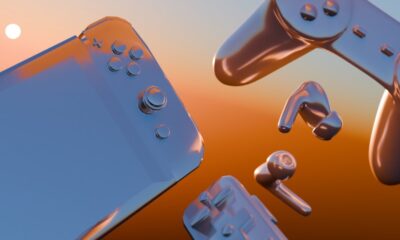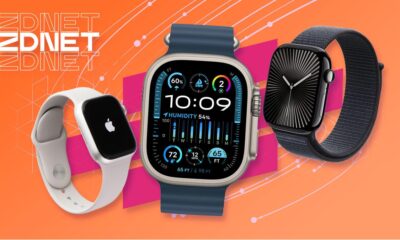Technology
Why Software Updates Keep iPhone Users from Switching to Android

Many smartphone users find themselves at a crossroads when considering a switch between operating systems. For those loyal to Apple, the allure of Android devices can be tempting, particularly due to their advanced features. However, a major sticking point for many iPhone users, including those who have tested Android devices extensively, is the way software updates are managed on the Android platform.
The smartphone landscape has evolved significantly since the launch of the first iPhone in 2007, and many users, including long-time iPhone enthusiasts, have begun to explore the offerings from Android manufacturers. Brands like Google and Samsung have released impressive devices, showcasing remarkable camera capabilities and innovative features. Additionally, the battery performance of devices from Motorola consistently impresses users.
Yet, despite these enticing features, many remain hesitant to abandon the iPhone. The primary concern? The fragmented nature of Android software updates, which can feel chaotic compared to Apple’s streamlined approach.
Understanding the Update Landscape
Apple’s iOS updates are released uniformly across all supported devices, ensuring that users can access the latest features immediately. For instance, all iPhones capable of running the latest iOS 26 are able to upgrade without delay. This means that users can quickly benefit from improvements and new functionalities as soon as they are made available.
In contrast, the release of updates for Android devices varies widely depending on the manufacturer and the model. While Android 16 was launched in June 2023, the timeline for when users receive these updates can be unclear. For example, users of the latest Samsung models, such as the Galaxy Z Flip 7 and Galaxy S25, typically receive updates promptly. However, older models may not see these updates for months.
Samsung’s update schedule indicates that while newer flagship models are prioritized, many midrange or older devices face a staggered rollout. This inconsistency can be frustrating for users who may feel left behind while waiting for their phones to receive critical updates.
The Challenge of Android Ecosystem
The disparity in update schedules is rooted in the structure of the Android ecosystem. Unlike Apple, which controls both the hardware and software, Google’s Android is open-source. This allows various manufacturers to customize the operating system for their devices, often complicating the update process. Each manufacturer, like Samsung or OnePlus, tailors the software to fit their hardware, which introduces additional layers of complexity.
Moreover, many users in markets like the United States purchase devices through wireless carriers. This can further delay updates as carriers may impose their own checks and modifications before releasing them to consumers. As a result, the update experience on Android is often viewed as convoluted and unpredictable.
The situation is not without potential improvements. Google has initiated initiatives like Project Treble, which aims to streamline the update process by separating the core Android experience from manufacturer customizations. While this is a step in the right direction, the inherent fragmentation of the Android market means that uniformity across devices is unlikely to be achieved in the near future.
The ongoing challenge for Android manufacturers is to not only speed up the delivery of updates but also to enhance the features that entice users. As long as updates remain inconsistent, potential switchers from iPhone may continue to reconsider their options.
Ultimately, the decision to switch from an iPhone to an Android device remains deeply personal, influenced by usage patterns and priorities. For many, the immediate access to new features and updates on iOS is a critical factor that keeps them loyal to Apple, despite the appealing advancements found in Android devices. As technology continues to evolve, both ecosystems will need to adapt to meet the needs of their users, ensuring that the transition between platforms becomes less daunting.
-

 Technology5 months ago
Technology5 months agoDiscover the Top 10 Calorie Counting Apps of 2025
-

 Health2 months ago
Health2 months agoBella Hadid Shares Health Update After Treatment for Lyme Disease
-

 Health3 months ago
Health3 months agoErin Bates Shares Recovery Update Following Sepsis Complications
-

 Technology4 months ago
Technology4 months agoDiscover How to Reverse Image Search Using ChatGPT Effortlessly
-

 Technology1 month ago
Technology1 month agoDiscover 2025’s Top GPUs for Exceptional 4K Gaming Performance
-

 Technology2 months ago
Technology2 months agoElectric Moto Influencer Surronster Arrested in Tijuana
-

 Technology5 months ago
Technology5 months agoMeta Initiates $60B AI Data Center Expansion, Starting in Ohio
-

 Technology5 months ago
Technology5 months agoRecovering a Suspended TikTok Account: A Step-by-Step Guide
-

 Health4 months ago
Health4 months agoTested: Rab Firewall Mountain Jacket Survives Harsh Conditions
-

 Lifestyle5 months ago
Lifestyle5 months agoBelton Family Reunites After Daughter Survives Hill Country Floods
-

 Technology4 months ago
Technology4 months agoHarmonic Launches AI Chatbot App to Transform Mathematical Reasoning
-

 Technology3 months ago
Technology3 months agoUncovering the Top Five Most Challenging Motorcycles to Ride





















